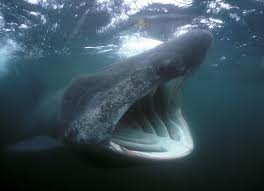Nature:美国科学家完成软骨鱼象鲨的基因组序列测序
美国科学家完成象鲨的基因组序列测序,发现它有一个不同寻常的适应性免疫系统,其基因组中也没有编码分泌的钙结合性磷蛋白的基因,这说明它没有骨头。相关文章发表于2014年1月8日的《Nature》杂志上。

Nature:美国科学家完成软骨鱼象鲨的基因组序列测序
象鲨(Callorhinchus milii)是澳大利亚南部和新西兰温带水域的一种本地软骨鱼,生活在200米到500米深处,在春季迁移到浅水中进食。
本期Nature发表了这种鱼的基因组序列。与其他脊椎动物基因组所做比较显示,它是所有已知脊椎动物(包括腔棘鱼)中演化最慢的基因组。
基因组分析表明,它有一个不同寻常的适应性免疫系统,缺少CD4受体和一些相关的细胞因子,这说明软骨鱼拥有一个原始的有颌类适应性免疫系统。其基因组中也没有编码分泌的钙结合性磷蛋白的基因,这与软骨鱼没有骨头的事实是一致的。
原文摘要:
Elephant shark genome provides unique insights into gnathostome evolution
Byrappa Venkatesh, Alison P. Lee, Vydianathan Ravi, Ashish K. Maurya, Michelle M. Lian,Jeremy B. Swann, Yuko Ohta, Martin F. Flajnik, Yoichi Sutoh, Masanori Kasahara, Shawn Hoon, Vamshidhar Gangu, Scott W. Roy, Manuel Irimia, Vladimir Korzh, Igor Kondrychyn,Zhi Wei Lim, Boon-Hui Tay, Sumanty Tohari, Kiat Whye Kong, Shufen Ho, Belen Lorente-Galdos, Javier Quilez, Tomas Marques-Bonet, Brian J. Raney, Philip W. Ingham, AlICE Tay,LaDeana W. Hillier, Patrick Minx, Thomas Boehm, Richard K. Wilson, Sydney Brenner &Wesley C. Warren
The emergence of jawed vertebrates (gnathostomes) from jawless vertebrates was accompanied by major morphological and physiological innovations, such as hinged jaws, paired fins and immunoglobulin-based adaptive immunity. Gnathostomes subsequently diverged into two groups, the cartilaginous fishes and the bony vertebrates. Here we report the whole-genome analysis of a cartilaginous fish, the elephant shark (Callorhinchus milii). We find that the C. milii genome is the slowest evolving of all known vertebrates, including the ‘living fossil’ coelacanth, and features extensive synteny conservation with tetrapod genomes, making it a good model for comparative analyses of gnathostome genomes. Our functional studies suggest that the lack of genes encoding secreted calcium-binding phosphoproteins in cartilaginous fishes explains the absence of bone in their endoskeleton. Furthermore, the adaptive immune system of cartilaginous fishes is unusual: it lacks the canonical CD4 co-receptor and most transcription factors, cytokines and cytokine receptors related to the CD4 lineage, despite the presence of polymorphic major histocompatibility complex class II molecules. It thus presents a new model for understanding the origin of adaptive immunity.

